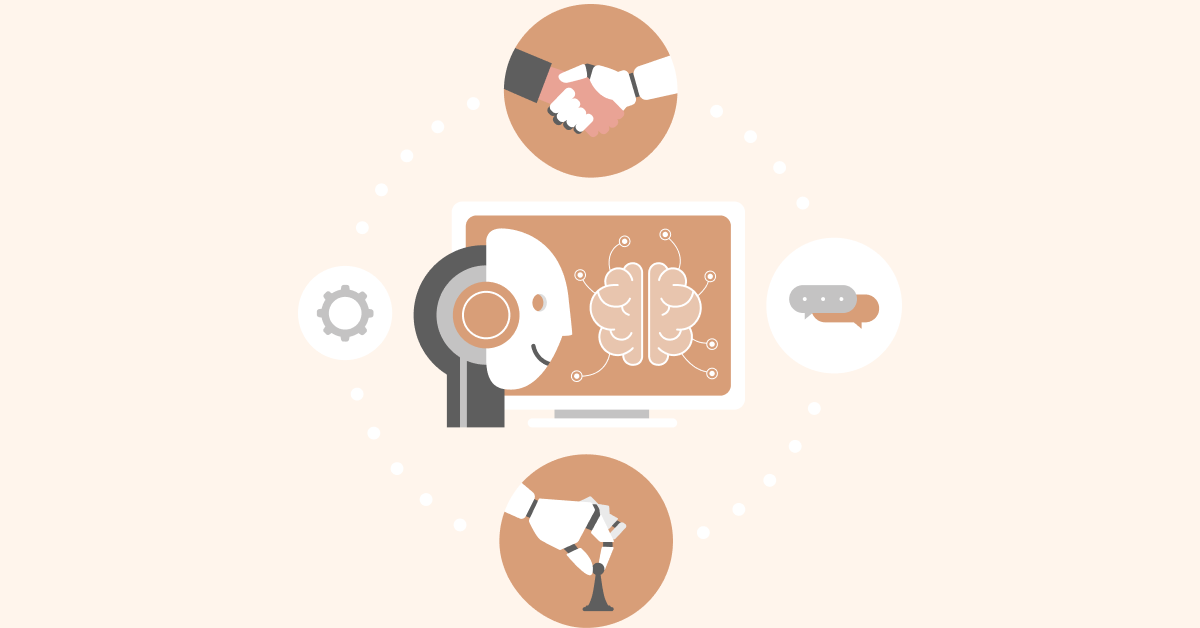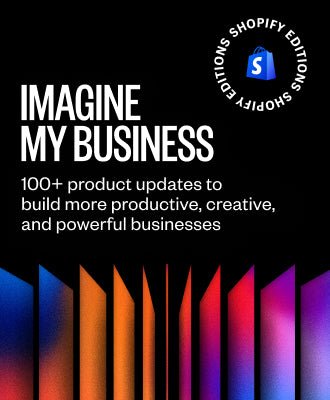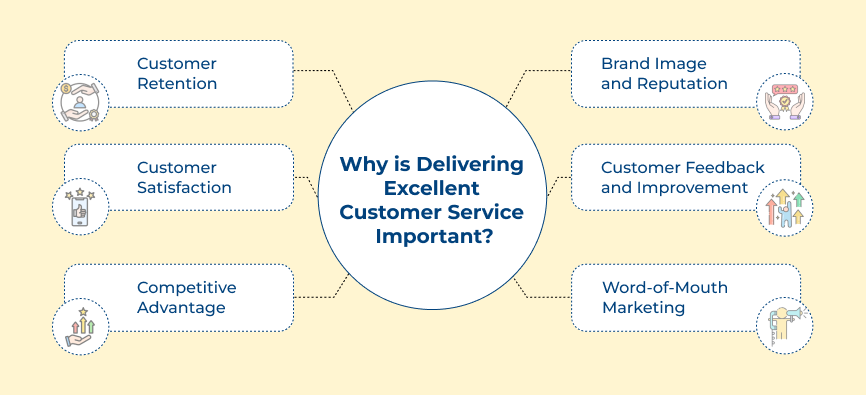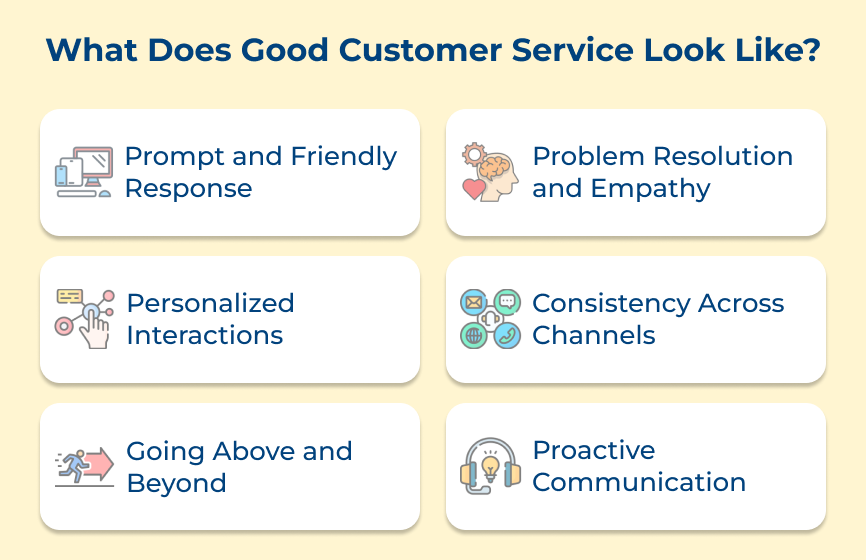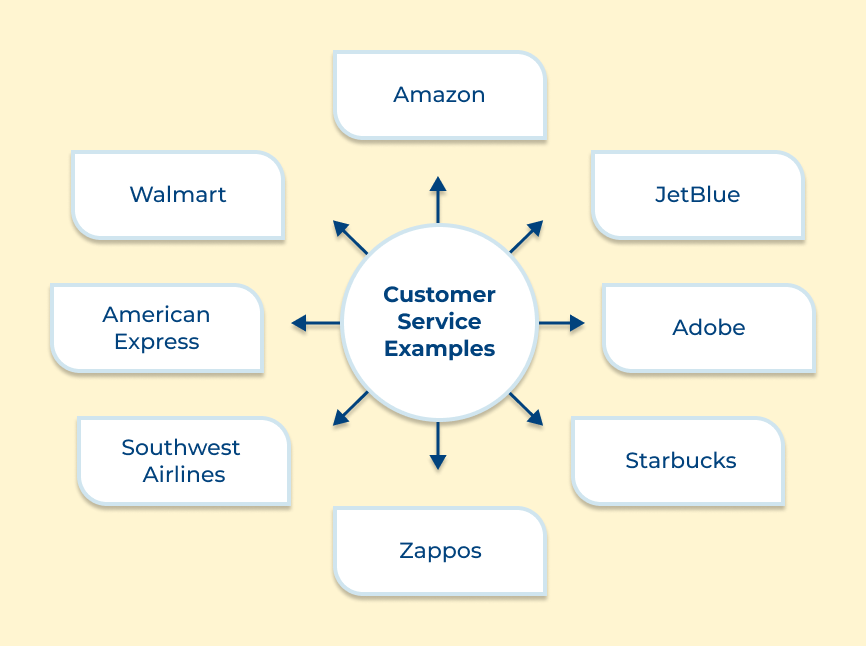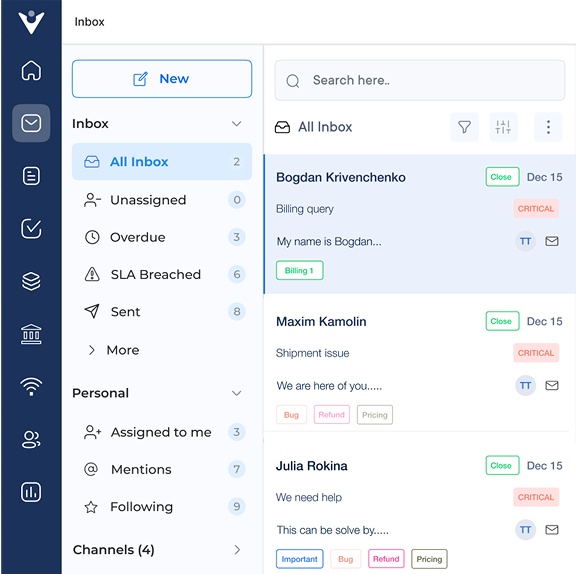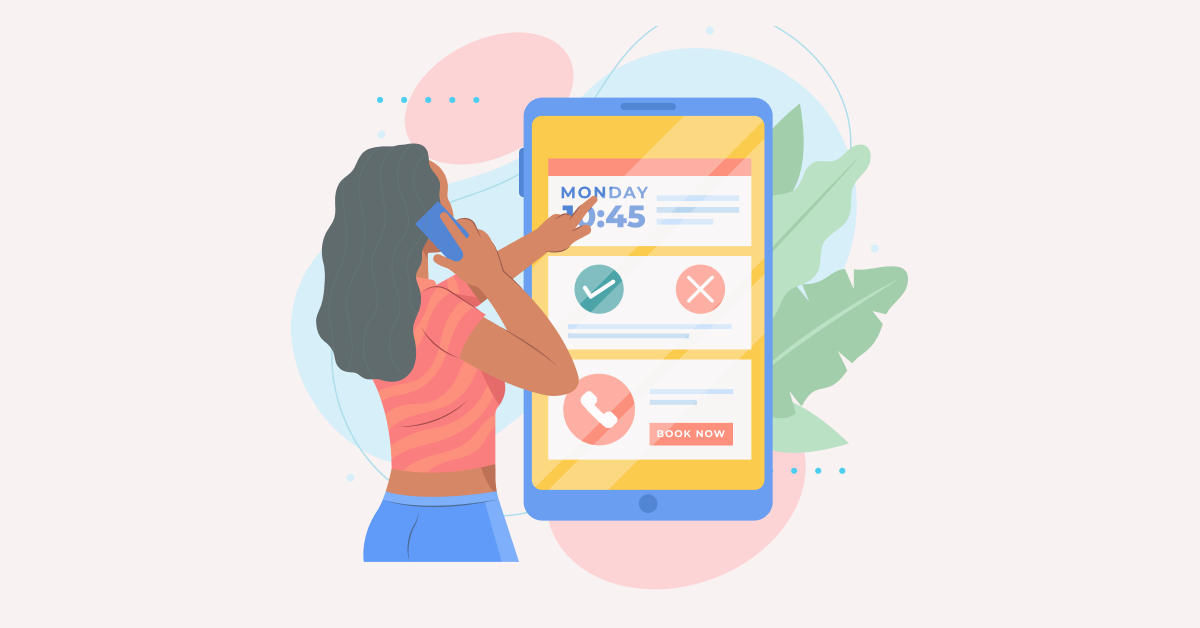1. Immediate Response to Social Media Complaints
Social media has transformed customer complaints from private exchanges to public spectacles. When customers voice frustrations online, your response time directly impacts not just the complainant but everyone watching. Quick, thoughtful responses demonstrate that you value customer feedback and take concerns seriously, potentially turning a negative situation into a positive brand moment.
Monitor social platforms continuously using notification tools to catch mentions as they happen. Respond within minutes with personalized messages that acknowledge the specific issue. More than that, 40% of shoppers expect brands to reply within an hour on social media, and 79% expect a response within 24 hours.
Pro tips:
- Create templated responses for common issues that can be quickly customized with specific details, saving precious minutes while maintaining a personal touch.
- Establish an escalation workflow where social media managers can instantly alert product or shipping teams about urgent issues without waiting for approval chains.
2. Personalized Follow-Up After Major Purchases
The customer journey doesn’t end at checkout, especially for significant purchases. Personalized follow-ups show customers you value their business beyond the transaction. The approach reduces buyer’s remorse, encourages proper product use, builds lasting relationships and naturally sets the stage for additional purchases without pushy sales tactics.
Create automated but personalized email sequences triggered at key moments after purchase to use it effectively. Customize content based on the specific product purchased and customer data. Include helpful tips, video tutorials, or exclusive content that enhances their experience. Schedule check-ins at strategic points when customers typically encounter questions or might be ready to explore accessories.
Additional tips:
- Use your CRM to track customer milestones with their purchase (like 30/60/90 days) and send targeted content that addresses common challenges people face at those specific stages.
- Empower customer service agents to make personalized follow-up calls to a percentage of major purchases, creating detailed notes that inform future interactions across all support channels.
3. Proactive Communication During Service Interruptions
Service disruptions are inevitable, but customer frustration isn’t. The customer service example involves alerting customers to problems before they discover them themselves. Proactive communication demonstrates accountability, builds trust and significantly reduces support ticket volume during outages, giving your team breathing room to fix the underlying issues.
Notify Before Issues Are Discovered
Implementing early warning systems that automatically detect service degradation allows your team to communicate with customers before they experience significant problems. The preemptive approach positions your company as transparent and customer-focused, a hallmark of excellent customer service example practices across industries.
Provide Regular Progress Updates
Establishing a consistent cadence of updates during prolonged incidents keeps customers informed without them needing to repeatedly check status pages. Create templated but honest communications that acknowledge the inconvenience while explaining technical issues in accessible language that helps customers understand without overwhelming them with unnecessary details.
Compensate For Significant Inconvenience
Developing a tiered compensation framework based on outage severity and impact ensures customers feel valued despite the disruption. It might include service credits, extended subscription periods, or special offers that acknowledge the inconvenience while reinforcing your commitment to making things right.
4. Empowered Staff Making On-the-Spot Decisions
Bureaucracy is the enemy of effective customer service. The customer service example focuses on giving frontline employees the authority to solve problems immediately without escalation. When staff can make real-time decisions about refunds, replacements, or exceptions, resolution time decreases dramatically while customer satisfaction soars.
Train For Independent Resolution
Creating comprehensive decision-making frameworks helps employees confidently handle diverse customer issues without constantly seeking manager approval. Role-playing exercises with increasingly complex scenarios build the judgment skills necessary for representatives to navigate gray areas while maintaining company standards.
Set Clear Compensation Guidelines
Establishing tiered authority levels gives employees specific parameters for offering compensation while protecting the business from excessive costs. When representatives understand exactly what they can offer, they can resolve issues in a single interaction.
Recognize Memorable Customer Experiences
Implementing recognition systems that celebrate employees who turn negative situations into positive ones reinforces your desired service culture. Sharing these success stories during team meetings provides practical examples of empowered decision-making while motivating other staff members to look for similar opportunities to create exceptional experiences.
5. Comprehensive Self-Service Knowledge Resources
Self-service resources empower customers to find answers independently at any hour. The customer service example reduces support costs, eliminates wait times and caters to the growing preference for self-directed problem-solving, particularly among tech-savvy customers.
- Content audit and gap analysis: Begin by analyzing your support tickets and customer questions to identify the most common issues that could be addressed through self-service options.
- Multi-format resource development: Create comprehensive documentation in various formats (articles, videos, interactive guides) addressing these common questions, ensuring information is accessible to different learning preferences.
- Intuitive organization and searchability: Implement robust search functionality with natural language processing and organize content in logical categories so customers can quickly find relevant information without getting frustrated.
- Continuous improvement cycle: Establish regular review processes to update content, ensuring your self-service knowledge base remains accurate and relevant.
The primary challenge with comprehensive self-service resources is balancing thoroughness with usability. Creating content that’s detailed enough to solve complex problems yet simple enough for customers with varying technical skills requires significant investment in content development and user experience design.
6. Customer-Informed Product Development Processes
Customer-informed product development transforms ordinary feedback into extraordinary product evolution by systematically incorporating user insights into your roadmap. When customers see their suggestions materialize in updates, they develop deeper brand loyalty and become advocates who champion your products because they feel personally invested in your company’s success.
Implementing the process requires breaking down silos between support and development teams so customer pain points directly influence product priorities. Creating structured pathways for feedback ensures customer voices reach decision-makers and prevents valuable insights from disappearing into the void of disconnected departments.
Additional tips:
- Create a dedicated customer advisory board with representatives from different user segments and meet with them quarterly to discuss upcoming features.
- Develop a transparent system where customers can vote on potential features and track the status of their suggestions, which builds trust by showing exactly how their input shapes your product evolution.
7. Surprise Gifts to Loyal Customers
Surprise gifting elevates transactional relationships into emotional connections by delighting customers when they least expect it, triggering powerful reciprocity feelings. These unexpected moments of appreciation create stories customers eagerly share with others, generating authentic word-of-mouth marketing that paid advertising simply cannot replicate.
The strategy works because it targets the basic human desire to feel valued beyond our economic contribution. When companies acknowledge relationship milestones or customer achievements with thoughtful, personalized gifts, they transform routine business interactions into meaningful experiences that inspire long-term loyalty.
Pro tips:
- Empower frontline employees with a quarterly “surprise and delight” budget they can use at their discretion to send personalized gifts when they identify particularly loyal customers or hear about important life events.
- Create a tiered gifting system that automatically triggers different value surprise gifts based on customer lifetime value benchmarks, ensuring your investment aligns with the customer’s long-term importance to your business.
5 Real Life Examples of Brands Focusing on Customer Service
The following brands have established themselves as leaders in customer service, creating loyal customer bases through their commitment to exceptional experiences that go beyond the ordinary.
Zappos
Zappos revolutionized online retail customer service by building their entire business model around creating “wow” moments for customers. Their representatives are empowered to spend unlimited time on calls, send personalized notes with orders and even direct customers to competitors if Zappos doesn’t have what they need.
The customer-first approach has transformed Zappos from a simple shoe retailer into a beloved brand with extraordinary customer loyalty. Their reputation for service excellence has become their primary marketing tool, reducing acquisition costs and creating customers who return repeatedly despite competitive pricing elsewhere.
Ritz-Carlton
The Ritz-Carlton empowers every employee with $2,000 in discretionary funds to solve guest problems without approval. They meticulously document guest preferences across their global properties, allowing staff to anticipate needs before guests express them and create personalized experiences that feel magically intuitive.
The exceptional service standard has allowed Ritz-Carlton to maintain premium pricing far above industry averages while achieving remarkable occupancy rates. Their service philosophy creates emotional connections with guests who become lifelong brand advocates, providing a steady stream of referrals and repeat visits that reduce marketing costs.
Nordstrom
Nordstrom’s customer service legacy includes accepting returns without receipts, personally walking purchases to customers’ cars and famously accepting a returned tire despite never selling tires. Sales associates build relationships through handwritten thank-you notes and proactive notifications when favorite items go on sale.
These service investments have insulated Nordstrom from much of the retail apocalypse affecting competitors. Their customer-centric approach has created multi-generational shopping loyalty, with families passing down their Nordstrom shopping tradition and helping the company maintain relevance despite massive industry disruption.
Chewy
Chewy transformed pet supply retail by combining digital convenience with deeply human customer service touches. They send handwritten holiday cards to customers, surprise shoppers with hand-painted portraits of their pets and automatically refund orders when products arrive damaged instead of requiring returns.
The emotionally intelligent approach to customer service has allowed Chewy to build a remarkably passionate customer base in an otherwise commodity market. Their service philosophy has created a community of pet parents who enthusiastically share their Chewy experiences online, providing powerful organic marketing that drives continual growth.
Trader Joe’s
Trader Joe’s turns grocery shopping from a chore into an adventure through crew members who are genuinely enthusiastic about products, offer spontaneous tastings, suggest recipe pairings and even open packages so customers can sample before buying. Their liberal return policy allows customers to return anything they don’t love, no questions asked.
The approach has created extraordinary customer loyalty in the highly competitive grocery sector. Trader Joe’s enjoys higher per-square-foot sales than nearly any competitor despite minimal advertising, demonstrating how exceptional service can replace traditional marketing while creating a community of customers who genuinely love shopping there.
Elevate your Support with Real-Life Customer Support Examples
Customer support is a critical aspect of any business. It’s the key to building strong relationships with customers and ensuring their satisfaction. Real-life excellent customer service examples are highly beneficial to elevate the customer service process. Companies can learn valuable lessons and apply them to their own business by examining successful customer service interactions.
Real-life customer service examples demonstrate the impact of exceptional service, from resolving issues promptly to exceeding customer expectations. They serve as inspiration and provide practical insights that can be implemented in various customer service situations.



